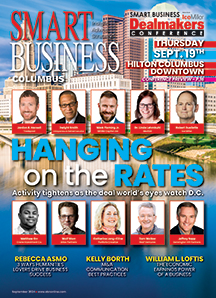The Centers for Disease Control and Prevention indicates the U.S. is in the midst of a “lifestyle disease” epidemic. The burden of chronic disease is growing as rising rates of obesity, physical inactivity, poor nutrition and tobacco use are resulting in increased cases of diabetes, cardiovascular disease and chronic pulmonary conditions.
In addition, the onset of these chronic conditions is shifting to the younger-age population who are still participating in the workforce. This is causing increased concern among employers regarding the impact on the cost of employer-sponsored health benefits and employee productivity.
Smart Business spoke with Amy Broadbent, vice president of Client Services at JRG Advisors, about how to break the poor health habits of your employees.
What are employers doing to counter poor health habits?
According to the National Business Group on Health, 67 percent of employers have identified ‘employee’s poor health habits’ as one of their top three challenges to maintaining affordable health coverage.
To counter this trend, employers are adopting health promotion and disease prevention strategies, taking advantage of their access to employees at the workplace at an age when intervention geared toward healthy behaviors can still have an impact on long-term health as well as long-term costs.
Survey data indicates that 92 percent of employers with 200 or more employees offer wellness based programs and initiatives at the workplace. Yet, while the availability of lifestyle and behavior modification tools are accessible and promoted, actual participation of employees in such programs remains limited.
Achieving adequate participation is essential for employers to realize the full value of their investment in workplace health promotion. Incentives, therefore, become an integral component of workplace wellness.
How can incentives increase participation in wellness programs?
A commonly incentivized program is the completion of a Health Risk Assessment (HRA). The HRA is a confidential HIPAA-compliant questionnaire that obtains information from employees regarding nutrition, physical activity, tobacco use, weight, blood pressure, cholesterol, etc.
Employers commonly offer a financial incentive or reward for employees who complete the HRA, with the objective of using aggregate HRA reporting to identify specific areas of concern among the employee population so these can be incorporated into workplace wellness programs and initiatives.
While the HRA can offer some insight as to the overall health of a group of employees, there is no true measurement of lifestyle or behavior improvements from year-to-year and, therefore, no way for employers to gauge program effectiveness.
In addition, biometric screenings are growing in popularity — not only as an alternate way to incentivize but also as an effective employee health risk management approach to workplace wellness.
These screenings, which can be conducted on-site at the workplace, measure height, weight, blood pressure, glucose levels, body mass index and more to identify common risk factors and conditions. The goal is not only to identify employees who are at risk, but ensure those with known risk factors or health conditions are adhering to their prescribed medications and/or course of treatment.
Employees are initially incentivized based on their participation in these screenings, typically related to their financial contribution toward the cost of health care premiums. In subsequent years, the incentive is based on the level of improvement over the prior year’s biometric screening results. For example, an improvement in overall score from year one to year two would result in a lower employee health insurance premium contribution.
Despite the increased awareness and workplace promotion, there is often insufficient evidence for employers to objectively measure the true financial impact or return on their investment as a result of workplace wellness efforts.
Biometric screenings, combined with an employee health risk management approach to wellness, enable employers to maintain costs and measure results. Talk to an advisor to learn how this approach to workplace wellness can work for you.
Insights Employee Benefits is brought to you by JRG Advisors

